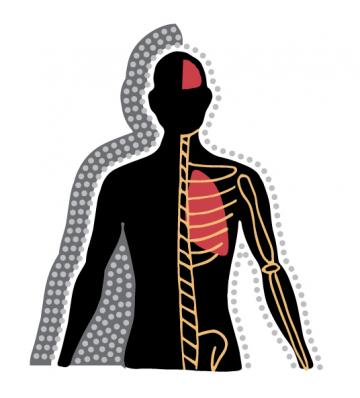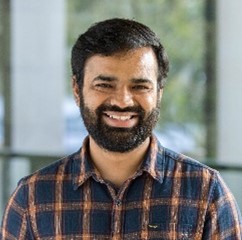
CIBIT will be presenting a series of seminars where completing PhD students will share their research journeys. The first seminar will feature Saikat Ghosh and Rajat Vashistha. We hope you can join us in person at the Centre for Advanced Imaging, building 57, The University of Queensland St Lucia campus on Tuesday 18 July 9:30-10:30 am.
Antibody Radio Conjugates for GPC-1-Targeted Theranostic agents – Saikat GhoshMy research (in collaboration with industry partner GlyTherix, Ltd., Australia) explores Miltuximab®, a clinical stage antibody that recognizes Glypican-1 (GPC-1). GPC-1 is a heparin sulfated proteoglycan highly expressed in GBM (and other cancers) but poorly expressed in normal tissue. The ongoing project involves developing a multi-format antibody platform for GBM theranostics. The platform would include full-length Miltuximab®, Fab’2, Fab and single-chain variable fragments (scFv) as constructs with high affinity but exhibiting variable pharmacokinetic properties. In the present study, all four formats were radiolabelled with 89Zr to validate their potential as diagnostic probes for non-invasive positron emission tomography (PET) imaging. These agents are concurrently being tested in 3D-tumour spheroids and pre-clinical mouse GBM tumour models to determine their safety and effectiveness using fluorescence and PET/CT imaging, respectively. Further, Miltuximab variants are being tested for delivery of alpha (212Pb) and beta (177Lu) radiation for targeted radiotherapy applications.
Machine learning for PET reconstruction and analysis – Rajat VashisthaPositron emission tomography (PET) is a functional biomedical imaging technique used clinically for diagnosis, treatment planning and monitoring. PET scans generate images of radioactive tracer uptake in tissue, which can be converted to parametric images to provide additional insight into tracer kinematics. However, existing approaches for parametric image reconstruction have limitations, including an inability to model spatial object-dependent noise and to estimate the non-invasive arterial input function. I will give an overview of my research exploring machine learning methods to improve image reconstruction quality and address other current limitations in PET:
- the benefits of using a machine learning framework for image reconstruction
- non-invasive estimation of subject specific arterial input function
- a novel approach for reconstructing high-quality parametric images directly from PET histoimages produced from time-of-flight PET data.


